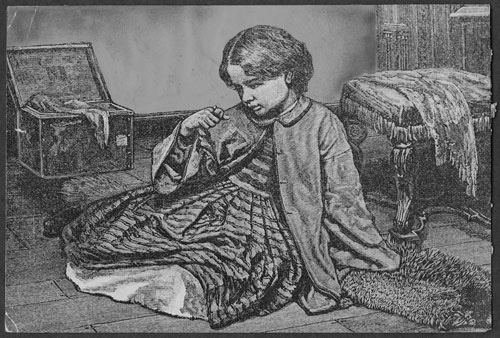Passing For Horror: Race, Fear, and Elia Kazan’s “Pinky”
Genders: Presenting Innovative Work in the Arts, Humanities and Social Theories
Issue 40 (2004)
Miriam J. Petty, Assistant Professor of Visual and Performing Arts
Rutgers University, Newark
Film genres routinely mix and evolve over time in ways that change our expectations of them, and change the way that we as audiences read and receive them. At times, however, the mixing of genres can function to focus our attention on certain film texts, and certain critical moments within these texts. While work on genre by scholars such as Thomas Schatz, Charles Maland, and Steve Neale suggests that social problem films are “too various in their narratives and thematic characteristics to warrant the label ‘genre’” (Maland 307), John Hill, Peter Roffman, and Jim Purdy observe the way that social problem films typically employ “general conventions, especially those of narrative and realism” (Roffman, Purdy 222). In this essay, I use the 1949 Hollywood film Pinky to suggest the ways in which social problem films dealing with the phenomenon of racial “passing” (instances in which light-skinned black characters “pretend” to be whites) use themes and motifs commonly found in horror films.
A post-World War II offering from the Fox studio, Pinky represents part of what Christopher Jones calls the “culmination of the trend toward black realism in the American cinema of the forties” (110) in 1949. As Jones observes, this year saw the release of films like Lost Boundaries (also a cinematic account of a “black-as-white” passing story), Stanley Kramer’s post-war drama Home of the Brave, and the film adaptation of William Faulkner’s Intruder in the Dust. Pinky’s place as the most popular and critically acclaimed of these films dealing substantially with “blacks at home in the United States, enduring the problems of civilian life” (Jones 110-111) suggests the significance of examining the currents of fear and repression underlying its presentation of racial realities.
In his noted essay “Ideology, Genre, Auteur,” Robin Wood posits that “in the classical Hollywood cinema motifs cross repeatedly from genre to genre,” and continues by asserting that genres “represent different strategies for dealing with the same ideological tensions” (671). As one of Hollywood’s social problem films on the theme of race, Pinky indeed addresses the profound and lasting ideological tension created by the social construct of race, the taboo of interracial relationships and the children of such relations. Pinky also casts a white actress as a “mulatto” character light-skinned enough to “pass for white,” further complicating the film’s ideological function by making “white as black” passing acceptable, while simultaneously problematizing “black as white passing,” a paradox I will discuss more fully later.
Throughout this essay, I use the word “mulatto” or the phrase “mulatto figure” to reflect the function that such characters perform—one which disrupts the boundaries of traditional racial stratifications between blacks and whites. In fact, my analysis of Pinky frequently conflates the terms “black” and “mulatto” or “mixed-race,” identities and experiences that are not necessarily one in the same. Pinky itself conflates these terms in its storyline. What is more, historically, Hollywood films that feature the mulatto figure do not attend to such differences, but at once exploit the sensationalism in the issue of passing and use the mulatto as a generic cipher for “the race problem.” Pinky pays more attention to questions of intraracial color difference than most, but still limits Pinky’s experience to a series of problems of race that subside when she accedes to the status quo of segregation. The specificity of her ancestry only serves to give her story an unusual “angle.”…
Read the entire article here.



